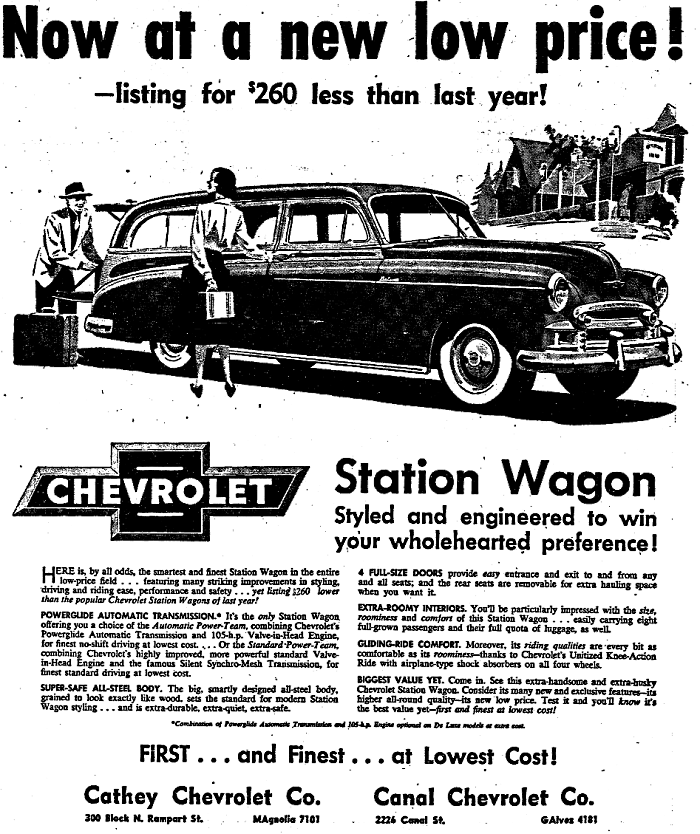|
Today in New Orleans History |
|
|
March 30



 

To receive an update for each day in New Orleans
history, join our facebook page
- Today in New Orleans History
Angela Hill (born March 30, 1949) has been a journalist since 1972. Angela
Hill grew up in Corpus Christi, Texas and graduated from the University of Texas at Austin in 1972 with a Bachelor of Arts
degree in Journalism. Prior to moving to New Orleans, she worked as an anchor and assistant news director at KGBT-TV, the
CBS affiliate in Harlingen, Texas. In April 1975, Angela Hill was hired as the consumer reporter for WWL-TV, the CBS
affiliate in New Orleans, Louisiana, USA. In September 1975, Hill became the first female anchor at WWL-TV. Between
1975 and 2013, she would coanchor the 5 PM, 6 PM and 10 PM newscasts. In 1998, the newscasts Hill co-anchored, achieved
a 20 Nielsen household rating, double that of its closest competitor WDSU, and the highest rating for an early-evening newscast
of all stations within Nielsen's 38 metered markets. During Hill's 38 year career at WWL-TV, she traveled to Paris,
London, Beirut, China, Africa and Rome where she would deliver the news and produce documentaries. In 1984, she played
the role of a woman reporter in the film Tightrope. In 1989, Angela Hill created and hosted the Angela Show, a daily
talk show. The Angela Show started in 1989 and ended in 1996. The Angela Show aired 1,668 shows. Hill's interviewees
included notable actors, authors, fashion designers, musicians, and Oscar de la Renta. Angela Hill has been nationally
recognized for her contributions as an American journalist. She has been awarded the following national awards: Gabriel
Award, Gracie Awards and Freedoms Foundation Award. During her career as an American journalist, Angela Hill produced
a documentary on China, in 1979, and the Golden Fleece Awards, in 1978. On June 6, 2013, the New Orleans City Council
honored Angela Hill for more than 35 years of service in New Orleans, Louisiana. (WIKI)
Willie Pastrano died n New Orleans on December 9, 1997 at the age of 62. Henry Thomas, "Mr. Golf" in New Orleans “In Lieu Of Flowers, Please Make Donations To Rebuild City Park Golf Course” requested
the Times-Picayune obituary for Francis Henry Thomas who died on December 2, 2005 in Houston months after post-Katrina federal
flood-wall breaks caused ruin to park's courses and displaced him, his wife Romy, and hundreds of thousands of other New Orleanians.
Thomas had dedicated more than half of his 94 years to caring for and expanding City Park's golf offerings into one
of the largest facilities in the country. He came to be known as "Mr. Golf" to local adherents of the sport.
Henry Thomas began working, in 1920, as a caddy at the park when he was 9 years old. He carried Babe
Ruth's clubs when the Yankees trained in New Orleans. In 1929, Thomas became a pro at age 18 and in 1930 he became an assistant
at City Park. He then moved to Colonial Country Club in Harahan until 1933 when he returned as head pro at City Park
when golf facilities included a mere 9-hole course abutting the McFadden mansion (now Christian Brothers School) and property.
Thomas remembered the "Black Cat", a depression era speakeasy on the 13th hole near Bayou
St. John, where golfers stopped for a home-brew -- many of them then failing to complete the remaining holes. During
the 1930s he organized a Christmas Holiday Tournament which evolved into the New Orleans Open, which he was instrumental
in organizing and served twice as its chairman. In 1933 he organized free weekly lessons for children age 5 through
14 which continued for decades and introduced generations of New Orleanians to the sport. The program grew to include
as many as 200 teachers, many of whom he had taught. A good number of his students became golf professionals, including
the man who would replace him when he retired. During Thomas' tenure the following improvements were
completed: A new nine hole golf course completed in 1937, which added nine holes to the original course. It ran along
Bayou St. John, surrounded the McFadden property, and continued north of Art Museum. The WPA caption for the 1930s
photograph above reads "Golf the Year Round. This course, in beautiful City Park, is one of the six evergreen golf courses
in New Orleans on which play is continuous the year round”. The old St. John's
golf clubhouse was remodelled at this time and was surrounded by additional structures which contained a lobby, lounge,
display shop, men's and women's locker rooms (increased from 75 to 250 lockers), and a caddy house accommodating 300 caddies
with a sound system connecting with the club house and a bulletin board maintained to display current news on golfing events
throughout the country, and an outdoor recreational area – all at a cost of $85,000. For the 1938 New Orleans Open
PGA Golf Tournament Mayor Robert S. Maestri donated $5000 in prize money – then $10,000 per year until 1941 when dentist
Herbert H. Meyer donated $5,000. The 1938 event attracted 10,000 spectators. The Crescent City Open in 1938 was won by
Lloyd Mangrum who bested Sam Snead and Lawson Little. The park hosted the Open until 1962. 1969
brought the addition of the 18-hole North Course and another club house -- Mayor Victor Schiro was the first to tee
off. That year the 15,000 square-foot "Henry Thomas' Golf Shop" in the park at 1040 Filmore Street took in
$6,500 in gloves sales alone (5% of the total volume of the shop, at which Mrs. Romy Thomas, his wife, worked). The Greater New Orleans Sports Hall of Fame inducted
Henry Thomas in 1977. In 1984 Friends of City Park named a tournament for him. Golfers played 250,000 rounds
of golf at City Park that year. In 1986 he asked that his contract be extended for another two years, which the City
Park commissioners approved, but in 1988 they decided that it was time for him to retire.
|
|
|

To receive an update for each day in New Orleans history,
join our facebook page - Today in New
Orleans History.
Analytics |
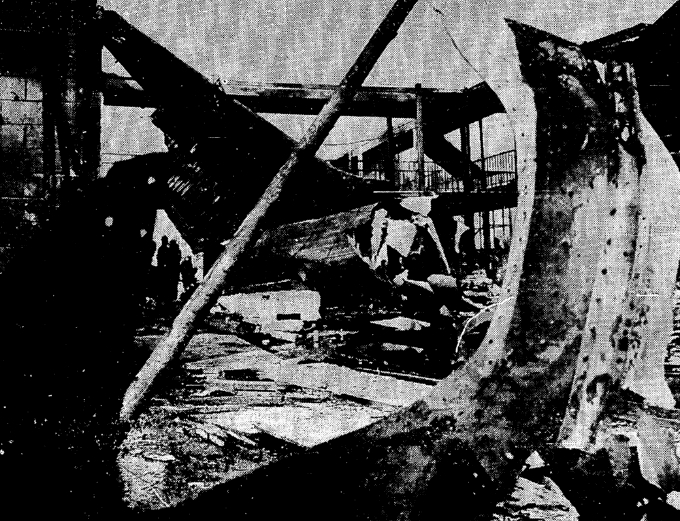 Delta Air Lines, Inc., DC-8, N802E, operating as Flight 9877, crashed during a landing approach to Runway 1 at New Orleans
International Airport, Kenner, Louisiana, on March 30, 1967. Five crewmembers and an FAA observer were fatally injured. This
was a training flight with no passengers aboard; however, impact occurred in a residential area and 13 persons on the ground
were also killed. The aircraft, several homes and part of a motel complex were destroyed.
Delta Air Lines, Inc., DC-8, N802E, operating as Flight 9877, crashed during a landing approach to Runway 1 at New Orleans
International Airport, Kenner, Louisiana, on March 30, 1967. Five crewmembers and an FAA observer were fatally injured. This
was a training flight with no passengers aboard; however, impact occurred in a residential area and 13 persons on the ground
were also killed. The aircraft, several homes and part of a motel complex were destroyed.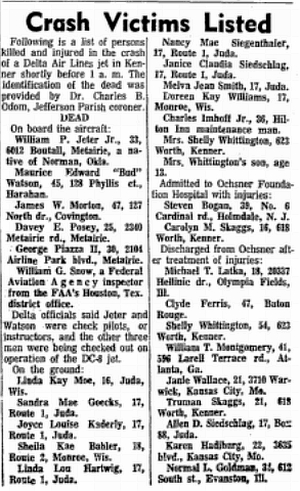
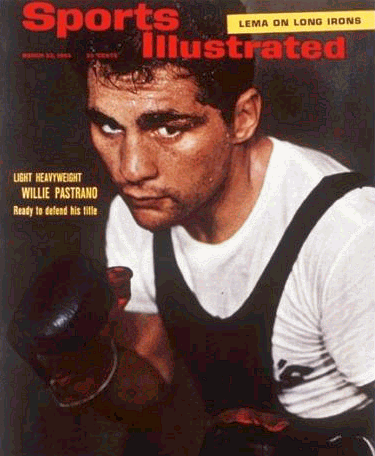 Born in New Orleans on November 27, 1935, boxer Wilfred "Willie" Raleigh Pastrano was the light-heavyweight boxing
champion of the world from 1963 until 1965.
Born in New Orleans on November 27, 1935, boxer Wilfred "Willie" Raleigh Pastrano was the light-heavyweight boxing
champion of the world from 1963 until 1965. 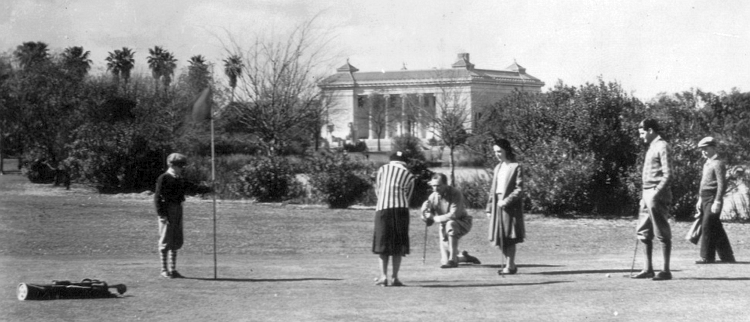
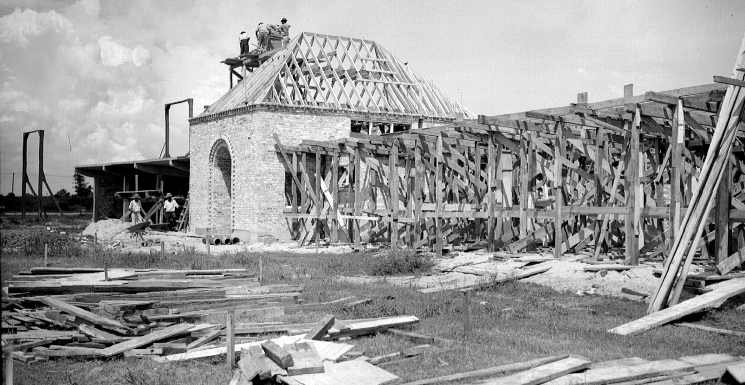 The driving range is under construction in this 1938 view (left). WPA notes for this photograph are, “It
will have an administrative building which will contain lockers and dressing rooms; refreshment room; six stalls, each of
which will be 18 feet wide. The field will be equipped with four batteries of flood lights”.
The driving range is under construction in this 1938 view (left). WPA notes for this photograph are, “It
will have an administrative building which will contain lockers and dressing rooms; refreshment room; six stalls, each of
which will be 18 feet wide. The field will be equipped with four batteries of flood lights”. 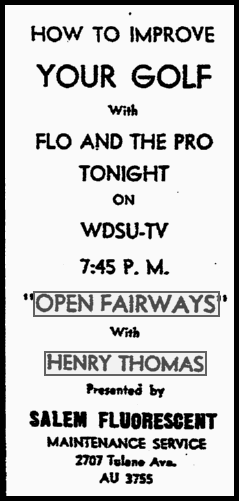 In 1940, Thomas inaugurated an annual tournament for juveniles. In 1942, he created a club for working women golfers,
Beginning in the 1940s, he began visiting Carville Leprosarium twice each month to teach doctors and patients, and continued
to do so until the 1980s.
In 1940, Thomas inaugurated an annual tournament for juveniles. In 1942, he created a club for working women golfers,
Beginning in the 1940s, he began visiting Carville Leprosarium twice each month to teach doctors and patients, and continued
to do so until the 1980s. 